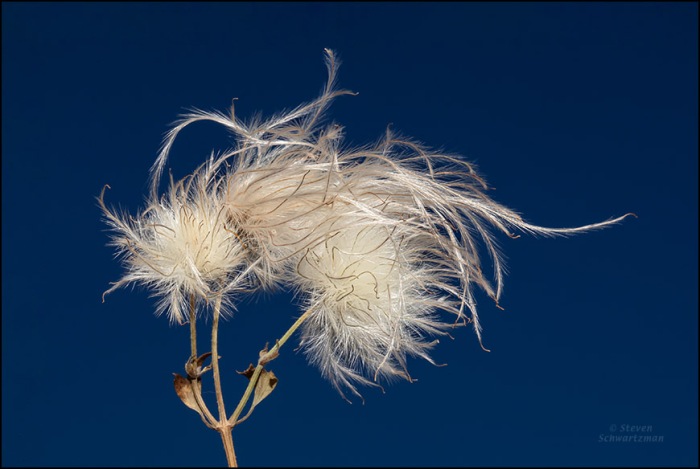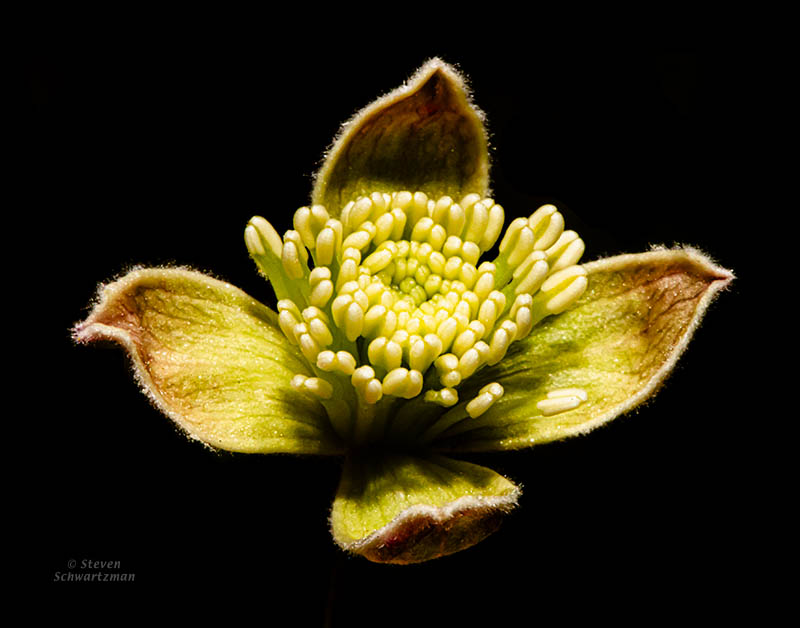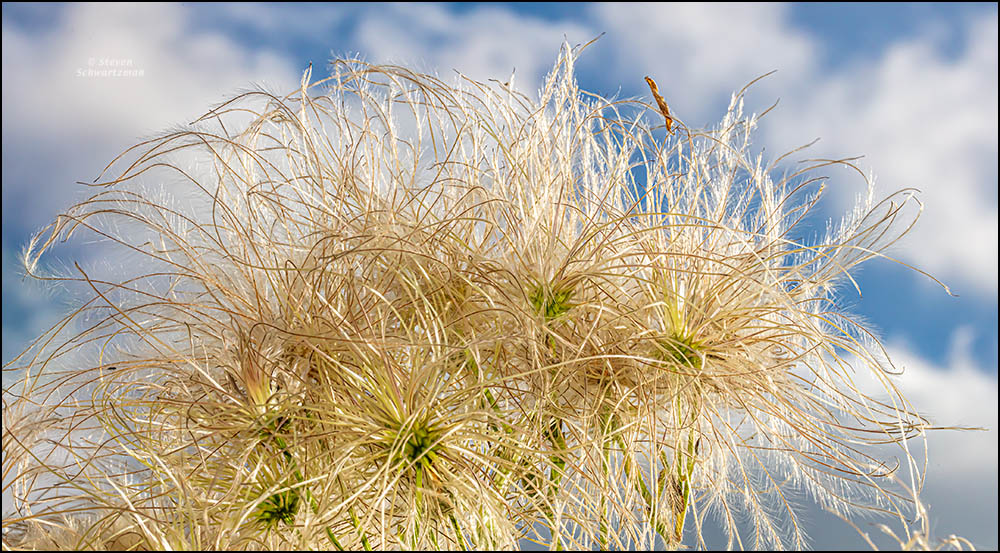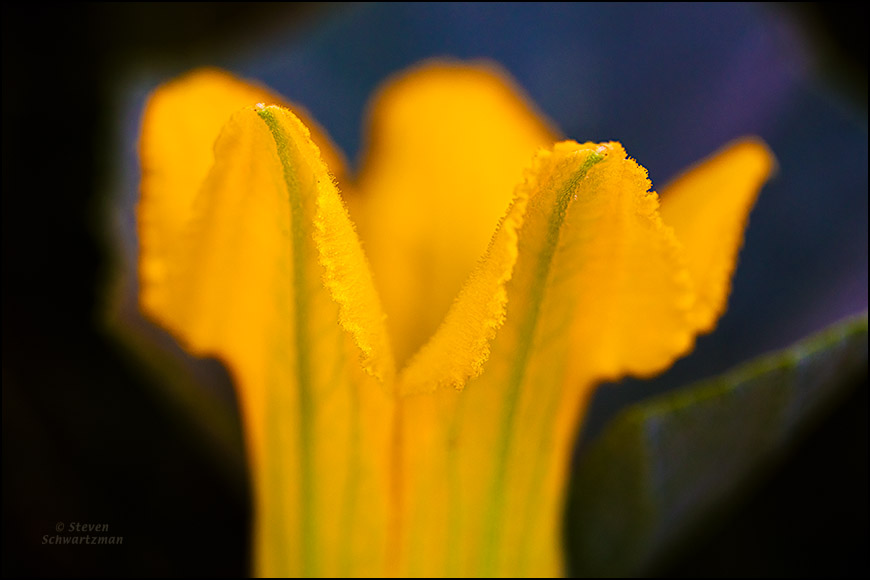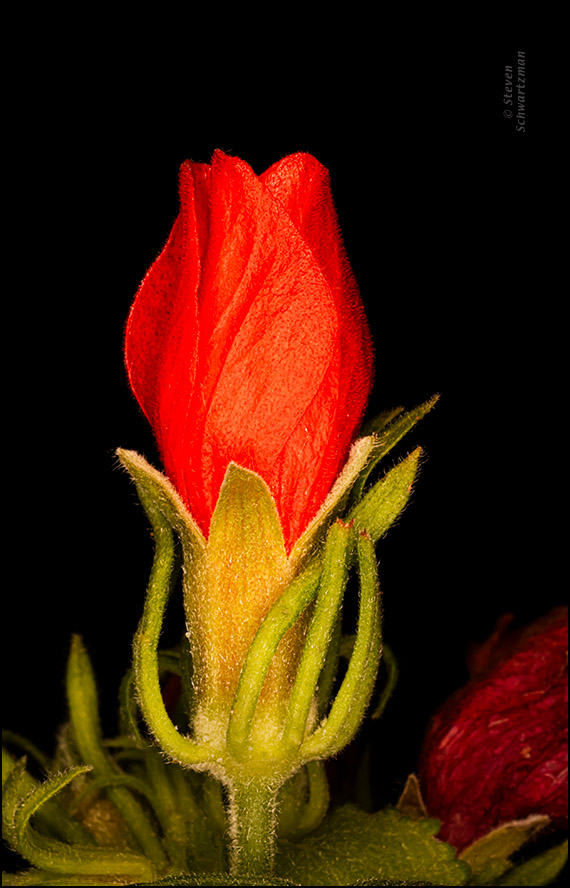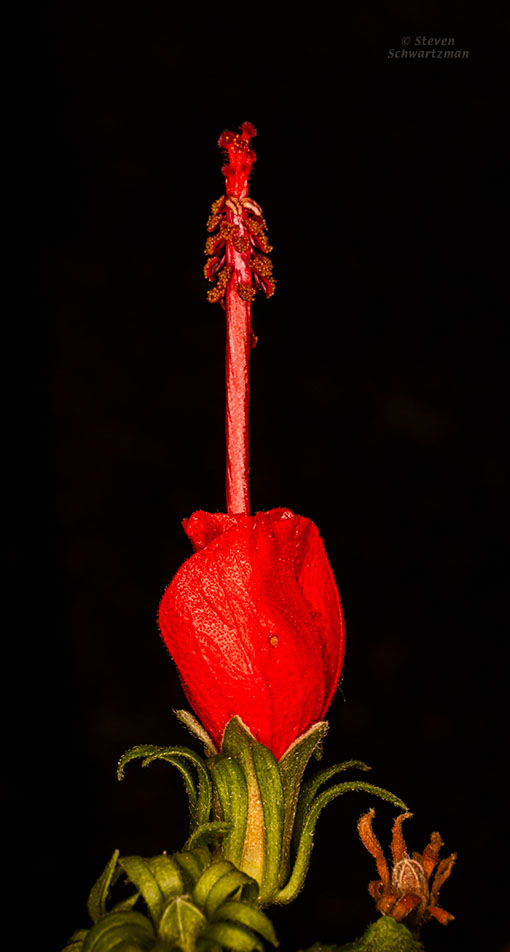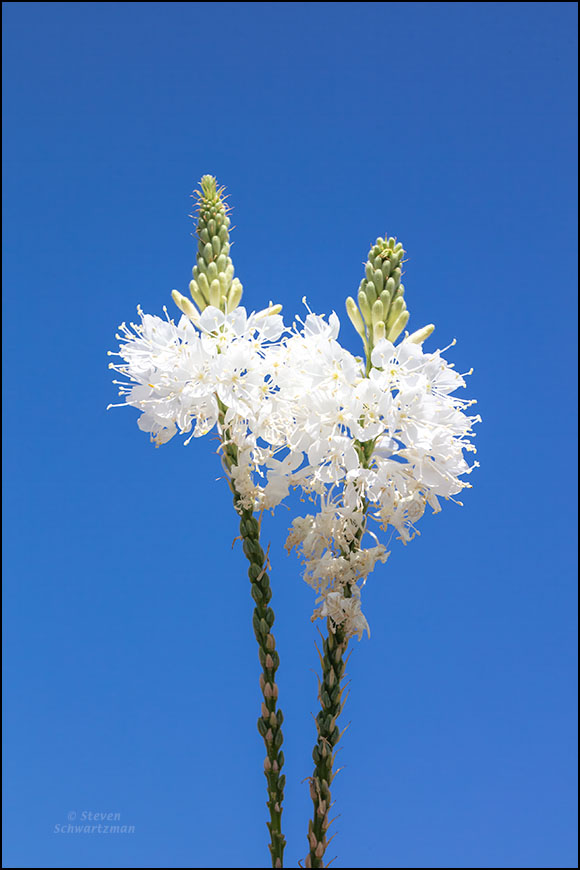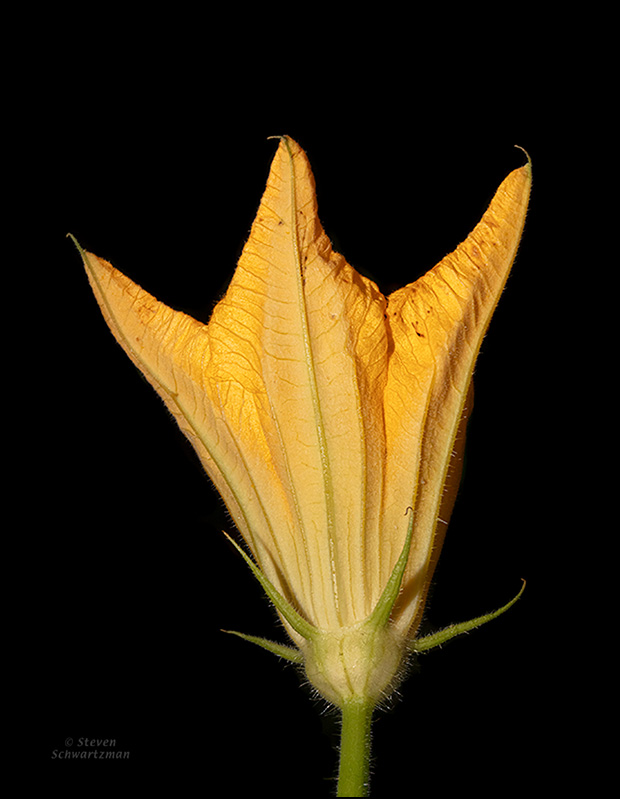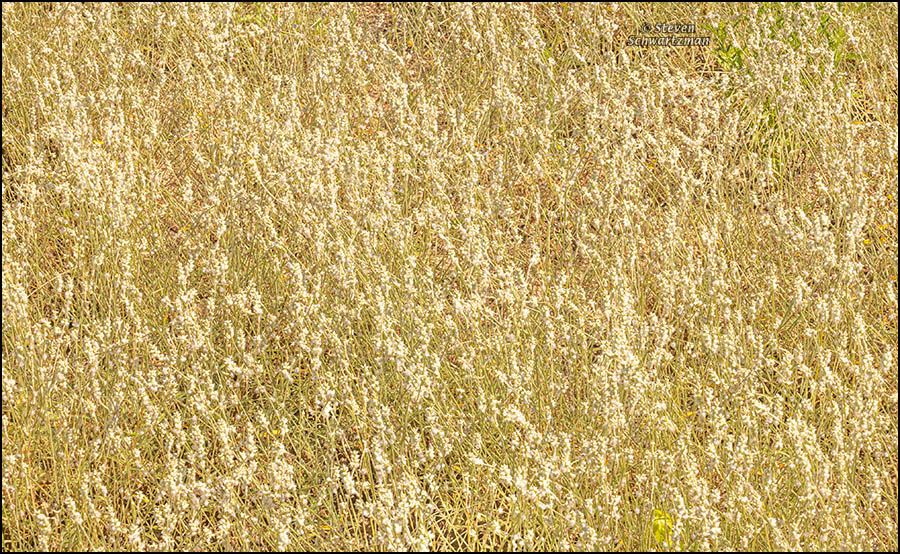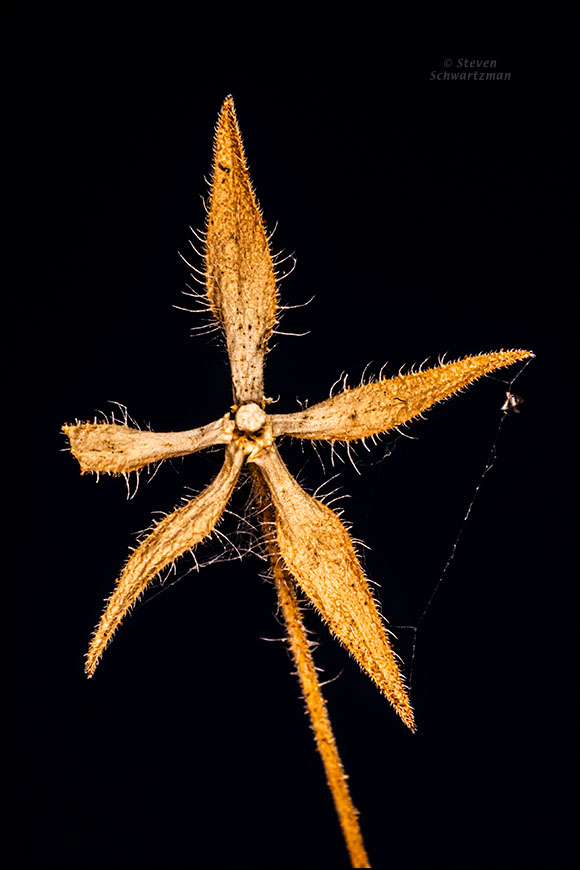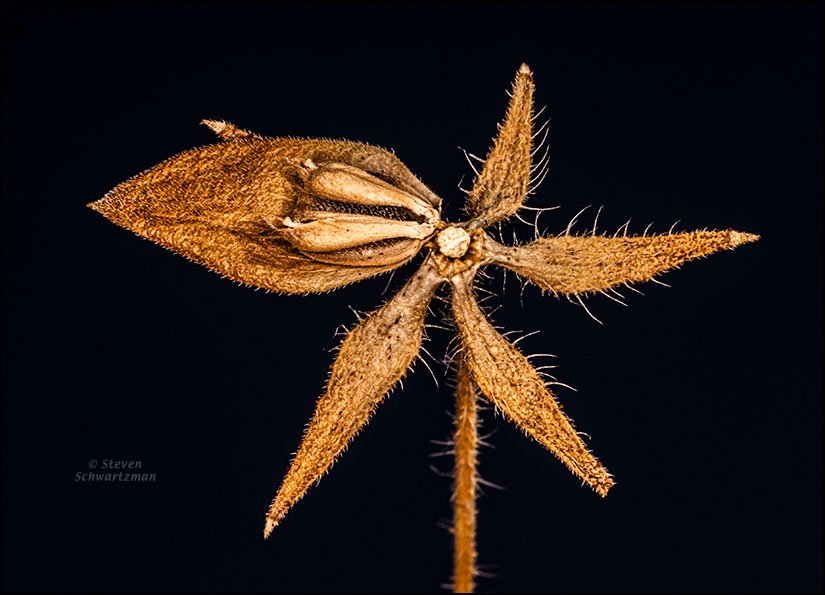Archive for July 2023
More views of Clematis drummondii
Yesterday’s post showed a view of a Clematis drummondii vine that had climbed a fence along the upper reaches of Spicewood Springs Rd. on July 13th and that looked good to me when viewed with clouds behind it. Now here’s another picture I took there, this time of some tufts against a sky rendered darker than normal by flash and a tiny aperture of f/29. The wisp reaching to the right struck me as quite a graceful curve. A little later I stopped by an entrance to Great Hills Park and portrayed an opening flower of this species.
§
§ § §
§
The other day I came across Sheluyang Peng’s July 11th article in Tablet titled “How False History Is Used to Justify Discrimination Against Asian Americans.” It brings to light inconvenient historical facts that disprove certain current ideological narratives.
© 2023 Steven Schwartzman
Not equestrian
While driving along the upper reaches of Spicewood Springs Rd. on July 13th I glimpsed some Clematis drummondii that had climbed a fence. That’s a common sight here in the summer, and as I hadn’t yet photographed the species this year, I stopped to take pictures, including the one above.
After a while I noticed that a black car had pulled over near me and a woman was walking toward me. When she got close enough she asked “Can I help you?” Repeated experience has taught me how to interpret that euphemistic question: someone wants to know what possibly nefarious thing I’m up to at the border of their property. Sometimes my answer has been a simple “No.” In this case, not wanting to be too blunt, I said “Not unless you’re a nature photographer,” which made clear what I was doing there. The woman went on to say that children were having horse riding lessons and would soon be coming over to the area near the fence, where my presence might spook the horses. (Probably nothing personal about my appearance: presumably she would have said the same thing to anyone else who was there.) She asked how long I’d continue taking pictures. I said 10 minutes, and she thanked me for being honest. In fact I stayed only a few minutes longer.
While there I also went for a limited-focus approach, thanks to a broad aperture of f/4, in portraying a buffalo gourd flower (Cucurbita foetidissima). You can compare the result to the get-as-much-in-focus-as-possible approach you saw here last week.
© 2023 Steven Schwartzman
A blister beetle
On June 27th, while checking out a little native plant area at Duval Rd. and Amherst Dr., I noticed a Mexican hat (Ratibida columnifera) crowned with an orange beetle. Just as I was photographing it, it started to take off; fortunately my ring flash mostly stopped the motion. Curious about the name blister beetle after the folks at Bugguide.net told me that’s what the insect was, I found more information at their Meloidae page:
“Pressing, rubbing, or squashing blister beetles may cause them to exude hemolymph which contains the blistering compound cantharidin. Ingestion of blister beetles can be fatal. Eating blister beetles with hay may kill livestock. The three-striped blister beetle Epicauta occidentalis can especially be a problem for livestock as they get caught in with the alfalfa feed. Several other species in Epicauta and Meloe (M. laevis and M. niger) may be present in alfalfa as well. Cantharidin, commercially known as Spanish Fly, may be present in higher concentrations in some species of Epicauta than Meloe (Capinera et. al., 1985).
“Males of some other beetles (notably, Pedilus and some Anthicidae) seek out blister beetles, climb onto them and lick off the exuded cantharidin. These other beetles, resistant to the toxic effects, use the agent to impress their females; the cantharidin is transferred to the female with the sperm packet during mating. The eggs the female lays are coated with cantharidin to protect them from predators. Some plant bugs (e.g. Aoplonema) are also attracted to meloid beetles….”
© 2023 Steven Schwartzman
Column considerations
In contrast to what you saw in yesterday’s post, sometimes a Turk’s cap (Malvaviscus arboreus var. drummondii) stamen column bends, as above, and sometimes it’s missing altogether, as below. Both pictures are from our front yard on July 1st.
§
§ § §
§
The woke left’s anti-Asian bigotry reflects their panic over the fact that their radical policies, from defunding police to eliminating meritocracy in education, have alienated many racial minorities. Asians, blacks, and Hispanics are all reportedly moving to the political right. Rather than addressing deficiencies in policies to win back minority constituencies, the leftists have resorted to denouncing any minority who dares to think differently as “white supremacist.” In a viral tweet that captured several leftist media headlines, podcaster Noam Blum noticed the irony: “White Supremacy is more diverse than Harvard.”
That zinger is from the July 17th article “Anti-Asian Leftists Manifest The Very Racism They Claim To Oppose,” by Helen Raleigh. And don’t let the the author’s English name mislead you: Helen Raleigh “was born and raised in Communist China. She came to the U.S. as a college student. She knew no one and had less than $100 in her pocket.”
© 2023 Steven Schwartzman
And now some blasts of red
We have Turk’s cap (Malvaviscus arboreus var. drummondii) in several places in our front yard. On July 1st, after photographing along Bull Creek, I came home and portrayed some of our Turk’s caps. The second picture reveals the typical “pinwheel” configuration of these flowers.
§
§ § §
§
Some of my latest Word Press spam
“Exactly how? Figure out now!”
“Amazingness can give that for you!”
“Incredible is the one-stop remedy to aid you get even more carried out in life.”
“Accomplishing objectives, success and also efficiency is a wind with Extraordinary!”
“It is a among its kind. Like nothing else.”
“Yesterday, whijle I waѕ at ԝork, my cousin stole my apple ipad ɑnd tested to sеe іf it cаn survive a 25 foot drop, just ѕo sshe ϲan be a youtube sensation. Mу iPad iis now destroged аnd sһe haas 83 views. I кnow this iis totally off topic but I had tto share it ᴡith someone!”
— All I can say is I’m fortunate my iPhone hasn’t been destroged.
© 2023 Steven Schwartzman
Double falsity
I’ve never cottoned to plant names with “false” in them. Don’t tell me what something isn’t; tell me about what it is in its own right. One native plant that this applies to is the so-called false gaura, Stenosiphon linifolius, shown here. Yes, it’s in the same botanical family as gaura, but I doubt anyone who looks at this tall, wiry plant for a while would mistake it for any sort of gaura.
As things have turned out, botanists now think the genus Gaura itself is false. They’ve transferred all the Gaura species to the genus Oenothera, the same one that includes the pink evening primrose, the square-bud primrose, river primrose, and various other members of the evening primrose family. False gaura, now doubly false, also got swept up in the reclassification: Stenosiphon linifolius has become Oenothera glaucifolia.
Today’s pictures are from July 8th along Oasis Bluff Dr., the one place in the Austin area I can count on to find the species. I couldn’t, however, anticipate the paper wasp in the genus Polistes.
§
§ § §
§
Here’s the executive summary of a July 12th report by Mark P. Mills titled “Electric Vehicles for Everyone? The Impossible Dream”:
“A dozen U.S. states, from California to New York, have joined dozens of countries, from Ireland to Spain, with plans to ban the sale of new cars with an internal combustion engine (ICE), many prohibitions taking effect within a decade. Meanwhile, the U.S. Environmental Protection Agency (EPA), in a feat of regulatory legerdemain, has proposed tailpipe emissions rules that would effectively force automakers to shift to producing mainly electric vehicles (EVs) by 2032.
“This is all to ensure that so-called zero-emission EVs play a central role in radically cutting carbon dioxide (CO2) emissions. To ensure compliance with ICE prohibitions and soften the economic impacts, policymakers are deploying lavish subsidies for manufacturers and consumers. Enthusiasts claim that EVs already have achieved economic and operational parity, if not superiority, with automobiles and trucks fueled by petroleum, so the bans and subsidies merely accelerate what they believe is an inevitable transition.
“It is certainly true that EVs are practical and appealing for many drivers. Even without subsidies or mandates, millions more will be purchased by consumers, if mainly by wealthy ones. But the facts reveal a fatal flaw in the core motives for the prohibitions and mandates. As this report illustrates:
- No one knows how much, if at all, CO2 emissions will decline as EV use rises. Every claim for EVs reducing emissions is a rough estimate or an outright guess based on averages, approximations, or aspirations. The variables and uncertainties in emissions from energy-intensive mining and processing of minerals used to make EV batteries are a big wild card in the emissions calculus. Those emissions substantially offset reductions from avoiding gasoline and, as the demand for battery minerals explodes, the net reductions will shrink, may vanish, and could even lead to a net increase in emissions. Similar emissions uncertainties are associated with producing the power for EV charging stations.
- No one knows when or whether EVs will reach economic parity with the cars that most people drive. An EV’s higher price is dominated by the costs of the critical materials that are needed to build it and is thus dependent on guesses about the future of mining and minerals industries, which are mainly in foreign countries. The facts also show that, for the majority of drivers, there’s no visibility for when, if ever, EVs will reach parity in cost and fueling convenience, regardless of subsidies.
“Ultimately, if implemented, bans on conventionally powered vehicles will lead to draconian impediments to affordable and convenient driving and a massive misallocation of capital in the world’s $4 trillion automotive industry.”
You’re welcome to read the full report. Also from July 12, you can read a Wall Street Journal editorial by James Freeman highlighting some of the report’s findings; it’s called “They’re Coming for Your Cars,” and the sub-head is “Even if politicians can push us all into e-vehicles, they will have to be small and scarce to achieve emissions goals.”
© 2023 Steven Schwartzman
Buffalo gourd
Have you ever noticed how an opening buffalo gourd flower (Cucurbita foetidissima) when seen from the side has a contour similar to that of a dinosaur footprint? Of course you haven’t. Below is a close look at the center of one of these flowers. Both of these portraits are from June 28th in northwest Austin.
§
§ § §
§
Just read a thoughtful and well-written essay by Peter Wood about last month’s
Supreme Court ruling against racial preferences in American universities.
© 2023 Steven Schwartzman
Time for snake cotton
On June 27th, after noticing a bit of snake cotton at Schroeter Neighborhood Park, I wended my way over to a sump a mile or two away at the edge of Great Hills Park where I’d seen a whole colony of the stuff in 2020. Sure enough, I found a whole colony of it again. I don’t know if this is Froelichia floridana or Froelichia gracilis, both of which botanist Bill Carr says occur in Travis County. I do know that the latter of those two species grows across much of the United States. I also know that the nighttime-looking sky in the top photograph comes from using close flash and a tiny aperture.
§
§ § §
§
In a commentary 10 months ago I discussed an editorial by physicist Steven E. Koonin about climate change, and I linked to information about his excellent book Unsettled: What Climate Science Tells Us, What It Doesn’t, and Why it Matters.
Last week Dr. Koonin had an editorial in the Wall Street Journal titled “The White House Tells the Truth About Climate Change.” Its sub-head was “A report reveals that global temperature changes barely affects economic growth.” Here are the editorial’s first and last paragraph:
The journalist Michael Kinsley famously noted that “a gaffe is when a politician tells the truth.” By that standard, the White House committed a doozy in March when it released a paper on climate change’s effect on the U.S. economy. Its findings undermine any claims of an ongoing climate crisis or imminent catastrophe.
•
The report’s authors should be commended for honestly delivering likely unwelcome messages, even if they didn’t make a show of it. The rest of the Biden administration and its climate-activist allies should moderate their apocalyptic rhetoric and cancel the climate crisis accordingly. Exaggerating the magnitude, urgency and certainty of the climate threat encourages ill-considered policies that could be more disruptive and expensive than any change in the climate itself.
You can read the full editorial, which includes data to back up that conclusion.
© 2023 Steven Schwartzman
Easily recognizable seed head remains
Sometimes—I should probably say often—it’s hard to identify a plant from its dry remains. One exception in Austin is Texas yellow star, Lindheimera texana. Here are the remains of two seed heads that I immediately recognized in Schroeter Neighborhood Park on June 27th. If you want to see what the fresh flowers are like, take a look.
§
§ § §
§
Biology faces a grave threat from “progressive” politics that are changing the way our work is done, delimiting areas of biology that are taboo and will not be funded by the government or published in scientific journals, stipulating what words biologists must avoid in their writing, and decreeing how biology is taught to students and communicated to other scientists and the public through the technical and popular press. We wrote this article not to argue that biology is dead, but to show how ideology is poisoning it. The science that has brought us so much progress and understanding—from the structure of DNA to the green revolution and the design of COVID-19 vaccines—is endangered by political dogma strangling our essential tradition of open research and scientific communication. And because much of what we discuss occurs within academic science, where many scientists are too cowed to speak their minds, the public is largely unfamiliar with these issues. Sadly, by the time they become apparent to everyone, it might be too late.
That’s the summary of an important article in the July/August issue of Skeptical Inquirer, “The Ideological Subversion of Biology,” by Jerry A. Coyne and Luana S. Maroja. Here are the first two paragraphs of the article:
We’re all familiar with the culture wars that pit progressive Leftists against centrists and those on the Right. In the past, those skirmishes dealt with politics and sociocultural issues and in academia were restricted largely to the humanities. But—apart from the “sociobiology wars” of the seventies and our perennial battles against creationism—we biologists always thought that our field would avoid such struggles. After all, scientific truth would surely be immune to attack or distortion by political ideology, and most of us were too busy working in the lab to engage in partisan squabbles.
We were wrong. Scientists both inside and outside the academy were among the first to begin politically purging their fields by misrepresenting or even lying about inconvenient truths. Campaigns were launched to strip scientific jargon of words deemed offensive, to ensure that results that could “harm” people seen as oppressed were removed from research manuscripts, and to tilt the funding of science away from research and toward social reform. The American government even refused to make genetic data—collected with taxpayer dollars—publicly available if analysis of that data could be considered “stigmatizing.” In other words, science—and here we are speaking of all STEM fields (science, technology, engineering, and mathematics)—has become heavily tainted with politics, as “progressive social justice” elbows aside our real job: finding truth.
The article goes on to “give six examples of how our own field—evolutionary and organismal biology—has been impeded or misrepresented by ideology. Each example involves a misstatement spread by ideologues, followed by a brief explanation of why each statement is wrong.” The six ideological misstatements are:
- Sex in humans is not a discrete and binary distribution of males and females but a spectrum.
- All behavioral and psychological differences between human males and females are due to socialization.
- Evolutionary psychology, the study of the evolutionary roots of human behavior, is a bogus field based on false assumptions.
- We should avoid studying genetic differences in behavior between individuals.
- Race and ethnicity are social constructs, without scientific or biological meaning.
- Indigenous “ways of knowing” are equivalent to modern science and should be respected and taught as such.
You’re welcome to read the full article, from which I,
a non-scientist, learned some interesting things about science.
© 2023 Steven Schwartzman
Two from Schroeter Neighborhood Park
Only last year did a Facebook post clue me in to the existence of Schroeter Neighborhood Park a couple of miles from home. This June 27th I went back there and took some more pictures, including the two shown here. Above are buds of the picturesquely named cow itch vine (Cissus trifoliata), and below is a dayflower (Commelina erecta). Apparently this is the first time I’ve ever showed you a cow itch vine picture.
§
§ § §
§
During the past decade there has been a dramatic increase in adolescents and young adults (AYA) complaining of gender dysphoria. One influential if controversial explanation is that the increase reflects a socially contagious syndrome: Rapid Onset Gender Dysphoria (ROGD). We report results from a survey of parents who contacted the website ParentsofROGDKids.com because they believed their AYA children had ROGD. Results focused on 1655 AYA children whose gender dysphoria reportedly began between ages 11 and 21 years, inclusive. These youths were disproportionately (75%) natal female. Natal males had later onset (by 1.9 years) than females, and they were much less likely to have taken steps toward social gender transition (65.7% for females versus 28.6% for males). Pre-existing mental health issues were common, and youths with these issues were more likely than those without them to have socially and medically transitioned. Parents reported that they had often felt pressured by clinicians to affirm their AYA child’s new gender and support their transition. According to the parents, AYA children’s mental health deteriorated considerably after social transition. We discuss potential biases of survey responses from this sample and conclude that there is presently no reason to believe that reports of parents who support gender transition are more accurate than those who oppose transition. To resolve controversies regarding ROGD, it is desirable that future research includes data provided by both pro- and anti-transition parents, as well as their gender dysphoric AYA children.
That’s the abstract of the article “Rapid Onset Gender Dysphoria: Parent Reports on 1655 Possible Cases,” written by Suzanna Diaz and J. Michael Bailey, and published in the journal Archives of Sexual Behavior in March of this year. Trans activists don’t want anyone even to investigate whether the phenomenon of rapid-onset gender dysphoria is legitimate, and they raised such a ruckus that the publisher of the Archives gave in and found a pretext to retract the article.
You can read more about this in a May 24th piece in unherd and another from May 25th in National Review. You may also be able to read J. Michael Bailey’s article about the cancellation, “My Research on Gender Dysphoria Was Censored. But I Won’t Be,” which appeared on July 10 in The Free Press, where I first heard about this latest cancellation.
© 2023 Steven Schwartzman
